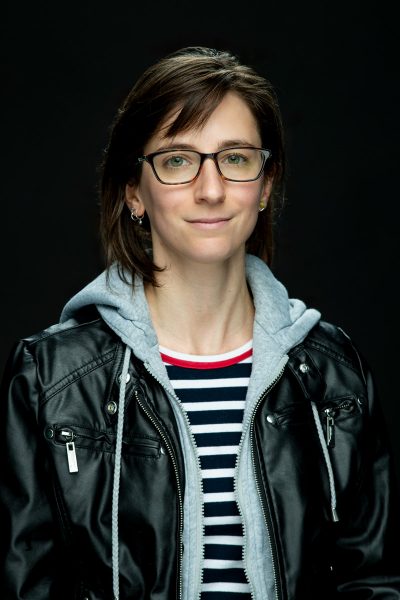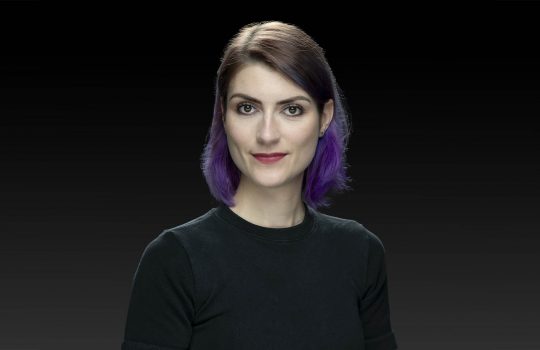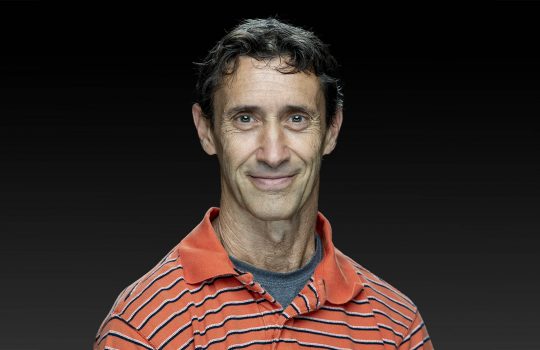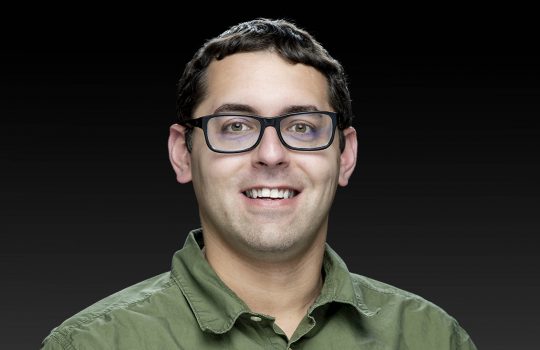Scientists at the U.S. Department of Energy’s Fermi National Accelerator Laboratory spend a lot of time thinking about one of the most difficult cosmological puzzles: how to find dark matter. Multiple experiments at the laboratory are focused on detecting elusive dark matter particles, each with different methods and detectors. However, regardless of the type of detector, they must be incredibly sensitive to potential dark matter particles with little to no outside interference, or background noise.

Ana Martina Botti
Ana Martina Botti, winner of this year’s Universities Research Association’s Honorary Tollestrup Award for Postdoctoral Research, has helped the SENSEI collaboration and the OSCURA collaboration increase the sensitivities of their detectors during her time as a post-doctoral researcher at Fermilab. Botti’s work on these detectors, known as skipper charged-couple devices, has helped to advance both experiments, which are aimed to unlock the mysteries of dark matter.
“URA is proud to recognize Dr Botti’s work that illustrates how exacting requirements of Dark Matter searches drive technological innovation,” said URA president and CEO, John Mester.
SENSEI is a detector intended for measuring interactions from light dark matter using a skipper CCD, which is typically a silicon die with square pixels. Scientists use these devices to see how a photon, or a dark matter particle, interacts with the electrons in the detector. When these particles create ionization electrons, the electrons are moved through the pixels with electric voltages in the sensor, where researchers can determine when a particle hit the detector. In skipper CCDs, these readout charges can be read multiple times and averaged, which filters out noise that may have entered the measurement.
Even though these devices are extremely precise, some background noise can still make its way into the detector. Environmental radiation, trapped electrons and dark current can all get in the way of accurate measurements, reducing the sensitivity of the detector.
Botti’s work on reducing the interference of these backgrounds has greatly increased the sensitivity of skipper-CCD detectors for dark matter searches, holding interference from dark current to a relatively rare occurrence where only one extra background electron is expected to show up in a pixel over the span of 200 years. This unprecedented sensitivity will also help efforts to scale up SENSEI for the Observatory of Skipper CCDs Unveiling Recoiling Atoms collaboration. OSCURA detectors will have 10 kilograms of active mass to make even more advances in the search for dark matter.
Having always been fascinated with unanswered questions about science and the universe, Botti studied physics as both an undergraduate at Buenos Aires University and graduate student before obtaining a Ph.D. in astrophysics from Karlsruhe Institute of Technology.
“From my point of view, physics was the field that gave you the most possibilities,” Botti said. “And I wanted to keep my doors as open as possible.”
Botti contributed to research at Pierre Auger Observatory while obtaining her Ph.D. and discovered a love for building detectors and instrumentation for experiments. After finishing up her work at the observatory, moving into building detectors for one of cosmology’s biggest mysteries seemed like a no-brainer.
“I think that dark matter is all about instrumentation. The main challenge of solving one of the biggest puzzles in cosmology is who makes the best instrument,” Botti said. “So, I saw the opportunity to use my skills to make a contribution that has an impact.”
The work has not been without obstacles. When the COVID-19 pandemic hit in March 2020, Botti was preparing to start postdoctoral work at Fermilab. However, the borders closed just a few days before she was scheduled to leave for the United States and plans were put on hold. Botti said the interruption allowed her to spend more time with family while working in a temporary position at the University of Buenos Aires.
“I was very lucky that I had the chance to spend most of the COVID pandemic at home close to my family and still work, which was great,” Botti said.
While Botti has contributed to achieving previously unthinkable levels of sensitivity for the SENSEI detector, the work is still ongoing. OSCURA will be a multikilogram detector, requiring careful, precise work to scale up from the 100-gram SENSEI detectors.
“I lead a lot of efforts in OSCURA to make a low-background package that allows us to scale up in mass,” Botti said. “This is opening the door to make OSCURA possible.”
Even though the work is intense, Botti thoroughly enjoys participating in this collaboration in such a fast-moving field. She appreciates the benefits of working with a smaller group of scientists with so much expertise.
“It’s very visible how each person contributes to the experiment,” Botti said. “I see the impact of my work much more clearly, and I see the impact of my colleagues’ work much more clearly.”
Botti’s dedication and the dedication of colleagues is evident in the results that have been achieved in such a short amount of time. With these ongoing efforts, it’s possible we are getting closer to measuring dark matter.
“I am always impressed with the work here at Fermilab from the CCD group and how fast they are developing this tool,” Botti said. “I’m always impressed with how fast and how well this is working, and I’m super happy to be part of it.”
Botti said she is very thankful for the technical staffs at Fermilab, Argonne and SNOLAB, as well as the collaborators in SENSEI and OSCURA, for aiding in the pursuit of this research.
Fermi National Accelerator Laboratory is supported by the Office of Science of the U.S. Department of Energy. The Office of Science is the single largest supporter of basic research in the physical sciences in the United States and is working to address some of the most pressing challenges of our time. For more information, please visit science.energy.gov.



